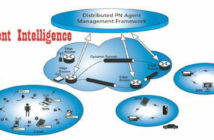According to World Bank estimates, the world’s waste generation is projected to nearly double in volume by 2025 to reach 6 Mn tons of waste per day. The Organization for Economic Co-operation and Development (OECD) member economies accounted for approximately half of the world’s waste in 2016. However, waste generation is primarily expected to be driven by emerging economies in Latin America and Asia Pacific in near future due to growing consumption of plastics across applications such as packaging, construction and consumer goods. Also, a growth in developing economies’ waste production is expected to have a positive impact on waste to energy market as governments introduce new policy. Government of India’s target for sustainable energy generation of 175 GW by 2022 will include 10 GW capacity from waste to energy facilities.
Request For Sample Copy of this Research Report :
https://www.coherentmarketinsights.com/insight/request-sample/1226
Europe is projected to be the largest market for WtE technologies over the forecast period. High generation of industrial waste, coupled with stringent EU-wide waste legislation has led to accelerated market growth in the region. West European economies have led the region in terms of existing and new capacity additions. For instance, Sweden incinerated 49.5% of its total municipal waste in 2015 for heat and power generation.
Asia Pacific is projected to be the fastest growing market led by Japan and China. According to the World Energy Council statistics, Japan incinerated up to 60% of its solid waste for heat generation. Also, China doubled its WtE capacity between 2011 and 2015. In India, the NTPC Ltd. invited tenders from national and international companies in 2017 to set up 100 new waste to energy facilities across the country. This can be attributed to stringent regulatory policies pertaining to waste generation and disposal.
Waste to Energy (WtE) is the process of energy generation from the treatment of waste. Municipal solid wastes, process wastes, medical, and agricultural wastes are used for energy generation. The waste consists of both biomass and non-biomass materials such as paper & paperboard, food waste, plastic, glass, and metal. Waste to Energy also aids in waste management as it reduces the amount of wastes ending up in landfills.
The major drivers for the growth of waste to energy market include the increasing popularity of renewable energy resources, high waste generation, stringent regulations regarding waste disposal, and world policy regarding climate change such as the Kyoto Protocol and Paris Climate Agreement. The restraining factors for the growth of the market include low fossil fuel prices, which can be attributed to an oversupply of crude oil and gas due to increased production from shale reserves in the U.S. The availability of low cost feedstock has significantly reduced the costs of production of conventional plastic.
In October 2017, Wood Group announced the acquisition of Foster Wheeler. The acquisition allows Wood Group to strengthen its renewable energy business portfolio. Major players operating in the waste to energy market include Austrian Energy & Environment Group GmbH, Arrow Ecology Ltd., Babcock & Wilcox Vølund A/S, Constructions Industrielles De La Editerranée (CNIM), Covanta Energy Corporation, Essent N.V., Haase Energietechnik AG, Wood Group, Qinetiq, and Pacific Renewable Fuels Inc.
Request For Table of Content of this Report:
https://www.coherentmarketinsights.com/ongoing-insight/toc/1226

